Melbourne Airport
| Melbourne Airport Tullamarine Airport | |||||||||||||||
|---|---|---|---|---|---|---|---|---|---|---|---|---|---|---|---|
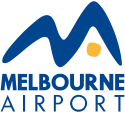 | |||||||||||||||
 | |||||||||||||||
| IATA: MEL – ICAO: YMML | |||||||||||||||
| Summary | |||||||||||||||
| Airport type | Public | ||||||||||||||
| Owner | Leased Commonwealth Airport | ||||||||||||||
| Operator | Australia Pacific Airports Corporation Limited | ||||||||||||||
| Serves | Melbourne | ||||||||||||||
| Location | Tullamarine, Victoria, Australia | ||||||||||||||
| Hub for | |||||||||||||||
| Elevation AMSL | 434 ft / 132 m | ||||||||||||||
| Coordinates | 37°40′24″S 144°50′36″E / 37.67333°S 144.84333°ECoordinates: 37°40′24″S 144°50′36″E / 37.67333°S 144.84333°E | ||||||||||||||
| Website | melbourneairport.com.au | ||||||||||||||
| Map | |||||||||||||||
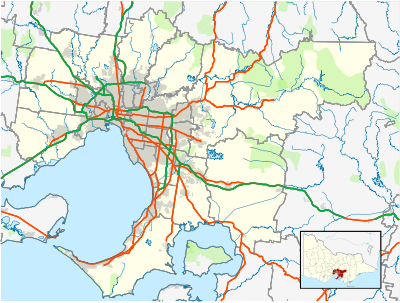 YMML Location within Melbourne | |||||||||||||||
| Runways | |||||||||||||||
| |||||||||||||||
| Statistics (2014/2015) | |||||||||||||||
| |||||||||||||||
|
Sources: Australian AIP and aerodrome chart[5] Passengers and aircraftmovements from the Bureau of Infrastructure, Transport and Regional Economics[6] | |||||||||||||||
Melbourne Airport (IATA: MEL, ICAO: YMML), also known as Tullamarine Airport, is the primary airport serving the city of Melbourne, and the second busiest airport in Australia. It was opened in 1970 to replace the nearby Essendon Airport. Melbourne Airport is the sole international airport of the four airports serving the Melbourne metropolitan area.
The airport is 23 km (14 mi) from the city centre. The airport has its own postcode—Melbourne Airport, Victoria (postcode 3045).[7] This is adjacent to the suburb of Tullamarine.
The Melbourne–Sydney air route is the fourth most-travelled passenger air route in the world.[8] The airport features direct flights to 33 domestic destinations of Australia in addition to destinations in the Pacific, London, Asia and North America. Melbourne Airport is the number one arrival/departure point for the airports of four of Australia's seven other capital cities.[lower-alpha 1] Melbourne serves as a major hub for Qantas and Virgin Australia, while Jetstar Airways and Tiger Airways Australia utilise the airport as home base. A regular coach service provides public transport to and from the city. Melbourne is the busiest airport for international export freight as of August 2011, while second busiest for import freight.[10] Domestically, Melbourne serves as headquarters for Australian air Express and Toll Priority and handles more domestic freight than any other airport in the nation.[11]
In 2003, Melbourne received the International Air Transport Association Eagle Award for service and two National Tourism Awards for tourism services.[12][13][14] The airport comprises four terminals: one international terminal, two domestic terminals and one budget domestic terminal. Most recently Melbourne Airport was awarded by Skytrax for having the best Airport hotel in the Australia/Pacific in the World Airport Awards. Melbourne Airport was also ranked the 43rd best airport for 2012. Melbourne reached 30 million passengers for the first time in the 12 months ending July 2013.[15] This increased to 33.1 million passengers per annum by July 2015.[16]
History
Establishment
Before the opening of Melbourne Airport, Melbourne's main airport was Essendon Airport which was officially designated an international airport in 1950. In the mid-1950s, over 10,000 passengers were using Essendon Airport and the limitations of Essendon Airport were beginning to become apparent. Essendon Airport's facilities were insufficient to meet the increasing demand for air travel; the runways were too short to handle the then new jet airliners and the terminals failed to handle the increase in passengers, by the mid-1950s, an international overflow terminal was built in a new northern hangar. Due to the encroachment of the urban boundary, the airport had become surrounded by residential housing, meaning that expansion of Essendon Airport was not possible.
The search for a replacement for Essendon commenced in February 1958, when a panel was appointed to assess Melbourne's civil aviation needs.[17]
In 1959 the Commonwealth Government acquired 5,300 ha (13,000 acres) of grassland in then-rural Tullamarine.[18]
In May 1959 it was announced that a new airport would be built at Tullamarine, with Prime Minister Robert Menzies announcing on 27 November 1962 a five-year plan to provide Melbourne with a A$45 million "jetport" by 1967.[19][20] The first sod at Tullamarine was turned two years later in November 1964.[17] In line with the five-year plan, the runways at Essendon were expanded to handle larger aircraft, with Ansett Australia launching the Boeing 727 there in October 1964, the first jet aircraft used for domestic air travel in Australia.[21][22]
On 1 July 1970, Melbourne Airport was opened to international operations by Prime Minister John Gorton, ending Essendon's near 2-decade run as Melbourne's international airport. Essendon still was home to domestic flights for one year, until they were transferred to Melbourne Airport on 26 June 1971,[23] with the first arrival of a Boeing 747 occurring later that year.[24] In the first year of operations, Melbourne handled six international airlines and 155,275 international passengers.[24]
Melbourne Airport was originally called 'Melbourne International Airport'. It is at Tullamarine, a name derived from the indigenous name Tullamareena.[21] Locally, the airport is commonly referred to as Tullamarine or simply as Tulla[25][26] to distinguish the airport from the other three Melbourne airports: Avalon, Essendon and Moorabbin.
On opening, Melbourne Airport consisted of three connected terminals: International in the centre, with Ansett to the South and Trans Australia Airlines to the North. The design capacity of the airport was eight Boeing 707s at a rate of 500 passengers per hour, with minor expansion works completed in 1973 allowing Boeing 747s to serve the airport.[27] By the late 1980s peak passenger flows at the airport had reached 900 per hour, causing major congestion.[27]
In late 1989, Federal Airports Corporation Inspector A. Rohead was put in charge of a bicentennial project to rename streets in Melbourne Airport to honour the original inhabitants, European pioneers and aviation history. Information on the first two categories was provided by Ian Hunter, Wurundjeri researcher, and Ray Gibb, local historian. The project was completed but was shelved, with the only suggested name, Gowrie Park Drive, being allocated, named after the farm at the heart of the airport. During the 1920s, the farm had been used as a landing site for aircraft, which were parked at night during World War II in case Essendon Aerodrome was bombed.[28]
Expansion and privatisation
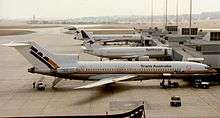
In 1988, the Australian Government formed the Federal Airports Corporation (FAC), placing Melbourne Airport under the operational control of the new corporation along with 21 other airports around the nation.[24] In April 1994, the Australian Government announced that all airports operated by Federal Airports Corporation would be privatised in several phases.[29] Melbourne Airport was included in the first phase, being acquired by the newly formed Australia Pacific Airports Corporation Limited for $1.3 billion.[24] The transfer was completed on 30 June 1997 on a 50-year long-term lease, with the option for a further 49 years.[30] Melbourne Airport is categorised as a Leased Commonwealth Airport.[31]
In July 1997, the Melbourne Airport website was launched, providing Australia's first real-time flight operations data over the internet.[24]
The first major upgrades at the airport were carried out at the domestic terminals,[24] with an expansion of the Ansett domestic terminal approved in 1989 and completed in 1991, adding a second pier for use by smaller regional airlines.[32][33] Work on an upgrade of the international terminal commenced in 1991,[24] with the 'SkyPlaza' retail complex completed in late 1993 on a site flanking the main international departure gates. The rest of the work was completed in 1995, when the new three-level satellite concourse was opened at the end of the existing concourse. Diamond shaped and measuring 80 m (260 ft) on each side, the additional 10 aerobridges provided by the expansion doubled the international passenger handing capacity at Melbourne Airport.[34]
Since privatisation, further improvements to infrastructure have begun at the airport, including expansion of runways, car parks and terminals. The multi-storey carpark outside the terminal was completed between 1995 and August 1997 at a cost of $49 million, providing 3,100 parking spaces, the majority undercover.[24] This initially four-level structure replaced the previous open air carpark outside the terminal. Work commenced on the six-story 276-room Hilton Hotel (now Park Royal) above the carpark in January 1999, which was completed in mid-2000 at a cost of $55 million.[35] Expansion of the Qantas domestic terminal was completed in 1999, featuring a second pier and 9 additional aircraft stands.[35]
In December 2000, a fourth passenger terminal was opened: the Domestic Express Terminal, located to the south of the main terminal building at a cost of $9 million. It was the first additional passenger terminal facility to be built at Melbourne Airport since 1971.[36]
Expansion of carparks has also continued with a $40 million project commenced in 2004, doubling the size of the short term carpark with the addition of 2,500 spaces over six levels, along with 1,200 new spaces added to the 5,000 already available in the long term carpark.[37] Revenue from retail operations at Melbourne Airport broke the $100 million mark for the first time in 2004, this being a 100 per cent increase in revenue since the first year of privatisation.[37]
Widening of the main north–south runway by 15 m (49 ft) was completed over a 29-day period in May 2005, enabling the operation of the Airbus A380.[38] The works were followed in March 2006 by a 5,000 m2 (54,000 sq ft) expansion of Terminal 2, and the construction of an additional level of airline lounges above the terminal.[39] In 2008 a further 25,000 m2 (270,000 sq ft) expansion of Terminal 2 commenced, costing $330 million with completion in 2011. The works added 5 additional aerobridges on a new passenger concourse, and a new 5,000 m2 (54,000 sq ft) outbound passenger security and customs processing zone.[40]
Terminals

Melbourne Airport's terminals have 56 gates: 40 domestic and 16 international.[41] There are five dedicated freighter parking positions on the Southern Freighter Apron.[42] The current terminal numbering system was introduced in July 2005; they were previously known as Qantas Domestic, International, and South (formerly Ansett Domestic).[43]
Terminal 1
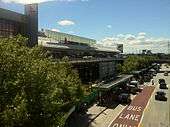

Terminal 1 hosts domestic and regional services for Qantas Group airlines, Qantas and QantasLink (which is located to the northern end of the building). Departures are located on the first floor, while arrivals are located on the ground floor. The terminal has 16 parking bays served by aerobridges; 12 are served by single aerobridges whilst four are served by double aerobridges. There are another five non-aerobridge gates, which are used by QantasLink.
Opened with Melbourne Airport in 1970 for Trans Australia Airlines, the terminal passed to Qantas in 1992 when they acquired the airline. Work on improving the original terminal commenced in October 1997 and was completed in late 1999 at a cost of $50 million,[35] featuring a second pier, stands for 9 additional aircraft, an extended access roadway and the expansion of the terminal.[24]
Today, a wide range of shops and food outlets are situated at the end of the terminal near the entrance into Terminal 2. Qantas has a Qantas Club, Business Class and a chairman's lounge in the terminal.[44][45]
Terminal 2
Terminal 2 handles all international, and limited domestic, flights out of Melbourne Airport, and was opened in 1970. The terminal has 20 gates with aerobridges. Cathay Pacific, Malaysia Airlines, Qantas (which includes two lounges in Terminal 2, a First lounge and a Business lounge/Qantas Club), Singapore Airlines, Air New Zealand, United Airlines and Emirates Airline all operate airline lounges in the terminal.[45]
The international terminal contains works by noted Australian Indigenous artists including Daisy Jugadai Napaltjarri and Gloria Petyarre.[46]
A$330 million expansion programme for Terminal 2 was announced in 2007 and was completed in 2012. The objectives of this project include new lounges and retail facilities, a new satellite terminal, increased luggage capacity and a redesign of customs and security areas.[47] A new satellite terminal features floor-to-ceiling windows offers views of the North-South runway. The new concourse includes three double-decker aerobridges which are gates 16, 18 and 20, each accommodating an A380 aircraft or two smaller aircraft and one single aerobridge. The baggage handling capacity will be increased, and two new baggage carousels will cater to increased A380 traffic. Work commenced in November 2007 and will be completed in 2011 but was opened in 2012.[48]
Although described as a satellite terminal, the terminal building is connected by an above-ground corridor to Terminal 2. Departures take place on the lower deck (similar to the A380 boarding lounges currently in use at Gates 9 and 11), with arrivals streamed on to the first floor to connect with the current first floor arrivals deck. All gates including 18 and 20 are now handling passengers.
Terminal 3
Terminal 3 opened with the airport as the Ansett Australia terminal, but is now owned by Melbourne Airport. Terminal 3 is home to Virgin Australia. It has eleven parking bays served by single aerobridges and eight parking bays not equipped with aerobridges.
An expansion of the terminal was approved in 1989 and completed in 1991 when a second pier was added by Ansett to the south for use by smaller regional airline Kendell.[32][33] The terminal was used exclusively by the Ansett Group for all its domestic activities until its collapse in 2001. It was intended to be used by the "New" Ansett, under ownership of Tesna; however, following the Tesna group's withdrawal of the purchase of Ansett in 2002, the terminal was sold back to Melbourne Airport by Ansett's administrators.[49] As a result, Melbourne Airport undertook a major renovation and facelift of the terminal, following which Virgin Australia (then Virgin Blue) moved in from what was then called Domestic Express (now Terminal 4),[50] and has since begun operating The Lounge in the terminal, using the former Ansett Australia Golden Wing Lounge area.[45][51] Regional Express also operates an airline lounge in the terminal.[52] The second Peir of T3 was lost too the new T4 out off the ten gates they will be reclaiming three. While the others will be Owened By Tigerair Australia. Check for Virgin Australia will still be in T3.
Terminal 4
Terminal 4 – originally called the Domestic Express or South Terminal – is dedicated to budget airlines and is the first facility of its kind at a conventional airport in Australia. It was originally constructed for Virgin Blue (Virgin Australia) and Impulse Airlines. Virgin Blue eventually moved into Terminal 3 following the demise of Ansett.[53] A$5 million refit began in June 2007[54] along the lines of the budget terminal model at Singapore Changi Airport and Kuala Lumpur International Airport. Lower landing and airport handling fees are charged to airlines due to the basic facilities, lack of jet bridges, and fewer amenities and retail outlets compared to a conventional terminal. However, the terminal is located next to the main terminal building, unlike in Singapore and Kuala Lumpur. The terminal was rebuilt by Tiger Airways Australia, which has used it as its main hub since it operated its first domestic flight on 23 November 2007.[55]
Jetstar Airways confirmed its involvement in discussions with Melbourne Airport regarding the expansion of terminal facilities to accommodate for the growth of domestic low-cost services. The expansion of Terminal 4 includes infrastructure to accommodate Tiger Airways Australia and Jetstar Airways flights. The development cost hundreds of millions of dollars.[26] In March 2012 it was announced that in October the same year T4 is to break ground, an expected completion of July 2014 was released, but was pushed back to late August 2015 and opened on 18 August 2015. The new T4 terminal is 35,000 m2 (380,000 sq ft) and linked "under one roof" with T3. Terminal 4 is currently used by Tigerair Australia, Regional Express Airlines, Jetstar and Airnorth. In November 2016 Jetstar moved in to T4.Three Gates are dedicated to Virgin Australia. Currently the Tigerair Australia Peir is not fully complete, while they are building it there is a makeshift walkway to the gates. Jetstar has triple the amount of gates they had at T1. [56]
Southern Freighter Apron
The Southern Freighter Apron has five dedicated freighter parking positions which host 21 dedicated freighter operations a week.[42] In August 1997, the fifth freighter parking position and the apron was extended.[24]
Other facilities
Melbourne Airport is served by four hotels. A Parkroyal Hotel is located 100 m (330 ft) from Terminal 2 atop the multi-level carpark. Work commenced on the six-story 280-room hotel in January 1999, which was completed in mid-2000.[35] The hotel was originally a Hilton but was relaunched as the Parkroyal on 4 April 2011.[57] Holiday Inn has an outlet located 400 m (1,300 ft) from the terminal precinct. Ibis Budget offers lodgings located 600 m (2,000 ft) from the terminals. Mantra Tullamarine opened in 2009, 2 km (1.2 mi) from the terminal precinct.[58]
Operations
Overview

Melbourne is the second busiest airport in Australia. The airport is curfew-free and operates 24 hours a day, although between 2 am and 4 am, freight aircraft are more prevalent than passenger flights.[59] In 2004, the environmental management systems were accredited ISO 14001, the world's best practice standard, making it the first airport in Australia to receive such accreditation.[60]
Airbus A380
Construction works were undertaken to prepare the airport for the arrival of the double-decker Airbus A380. The A380 has been purchased by several airlines using the airport, namely Malaysia Airlines, Qantas, Qatar Airways, Thai Airways, China Southern Airlines, Singapore Airlines, Etihad Airways and Emirates. The improvements included the construction of dual airbridges (Gates 9 and 11) with the ability to board both decks simultaneously to reduce turnaround times, the widening of the North-South runway and remote stands and taxiways by 15 m (49 ft), the extension of the international terminal building by 20 m (66 ft) to include new penthouse airline lounges, and the construction of an additional baggage carousel in the arrivals hall. As a result, the airport was the first in Australia to be capable of handling the A380.[61] The A380 made its first test flight into the airport on 14 November 2005.[62] On 15 May 2008 the A380 made its first passenger flight into the airport when a Singapore Airlines Sydney-bound flight was diverted from Sydney Airport because of fog.[63]
Beginning services in October 2008, Qantas was the first airline to operate the A380 from the airport, flying nonstop to Los Angeles International Airport twice a week. This was the inaugural route for the Qantas A380.[64]
Runways
Melbourne Airport has two intersecting runways: one 3,657 m (11,998 ft) north–south and one 2,286 m (7,500 ft) east–west. Due to increasing traffic, several runway expansions are planned, including an 843 m (2,766 ft) extension of the north-south runway to lengthen it to 4,500 m (14,764 ft), and a 1,214 m (3,983 ft) extension of the east–west runway to a total of 3,500 m (11,483 ft).[65] Two new runways are also planned: a 3,000 m (9,843 ft) runway parallel to the current north–south runway[65] and a 3,000 m (9,843 ft) runway south of the current east–west runway.[65] The 3rd runway is expected to cost $500 million and will be open by 2020.[66] Traffic movement is expected to reach 248,000 per annum by 2017, necessitating a third runway.[67]
On 5 June 2008, it was announced that the airport would install a Category III landing system, allowing planes to land in low visibility conditions, such as fog. This system will be the first of its kind in Australia,[68] and was commissioned March 2010 at a cost of $10 million.[17]
Melbourne Centre
In addition to the onsite control tower, the airport is home to Melbourne Centre, an air traffic control facility that is responsible for the separation of aircraft in Australia's busiest flight information region, Melbourne FIR. Melbourne FIR monitors airspace over Victoria, Tasmania, southern New South Wales, most of South Australia, the southern half of Western Australia and airspace over the Indian and Southern Ocean. In total, the centre controls 6% of the world's airspace.[69] The airport is also the home of the Canberra approach and Melbourne approach facilities, which provide control services to aircraft arriving and departing at those airports.
Airlines and destinations
Passenger
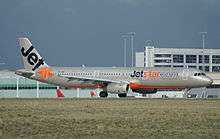

Cargo
The following airlines operate cargo-only services from Melbourne Airport's Southern Freighter Apron:
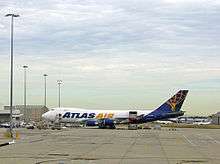
| Airlines | Destinations |
|---|---|
| Australian airExpress | Adelaide, Brisbane, Cairns, Canberra, Gold Coast, Hobart, Launceston, Perth, Sydney, Townsville |
| Cathay Pacific Cargo | Hong Kong, Sydney, Toowoomba-Brisbane West Wellcamp (Starts 22 November 2016) |
| MASkargo | Kuala Lumpur–International, Jakarta-Soekarno-Hatta, Sydney |
| Polar Air Cargo | Cincinnati, Hong Kong, Honolulu, Sydney |
| Singapore Airlines Cargo | Adelaide, Auckland, Singapore |
| Toll Aviation | Sydney-Bankstown |
| Toll Priority | Brisbane, Perth, Sydney |
| Toll Priority operated by Toll Aviation | Adelaide, Brisbane, Sydney |
Traffic and statistics
Melbourne Airport recorded more than 29.9 million passengers in 2012–13.[3] 6.2 million of those were international, with the remaining 21.7 million being domestic. There were 206,798 aircraftmovements, the vast majority being domestic passenger services.[6] In the long term, the compounded average annual growth rate (CAAGR) for passengermovements is between 3.3% and 4.3%. For aircraftmovements, the CAAGR is between 1.8% and 2.6%.[65] This firmly entrenches Melbourne as Australia's second busiest airport, ahead of Brisbane[6]
The following table lists passenger statistics for Melbourne Airport.
|
|
|
|
Ground transport
Car
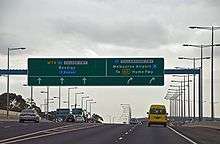
Melbourne Airport is 23 km (14 mi) from the city centre and is accessible via the Tullamarine Freeway. One freeway offramp runs directly into the airport grounds, and a second to the south serves freight transport, taxis, buses and airport staff.[95] In June, 2015, the Airport Drive extension was completed, creating a second major link to the airport. The link starts at the M80 Western Ring Road and provides direct access to Melrose Drive 1.5 kilometres from the terminal area.[96] Melbourne Airport has five car parks, all of which operate 24 hours a day, 7 days a week. The short-term, multi-level long-term, business and express carparks are covered, while the long-term parking is not.[97] The main multi-level carpark in front of the terminal was built in the late 1990s, replacing the pre-existing ground-level car parking.[35] It has been progressively expanded ever since.
Public transport
The Skybus Super Shuttle bus service is the main public transport link to the airport, taking approximately 20 minutes to reach Southern Cross Station in the Melbourne central business district. From Southern Cross, travellers can access V/Line regional and Metro Trains Melbourne suburban trains, Yarra Trams and interstate train and bus services.
There are local bus services to Melbourne Airport. The route 901 SmartBus service was introduced in September 2010,[98] as a frequent local bus service.[99]
There are nine other bus companies serving the airport, with services to Ballarat, Bendigo, Dandenong, Frankston, Mornington Peninsula, Geelong, Melbourne's suburbs, Shepparton and the Riverina.[100] These provide alternatives to transfer onto V/Line services.
Proposed Melbourne Airport Rail Link
There is no railway connection between the airport and the city. The possibility of installing a rail link from what was known as the Broadmeadows (now the Craigieburn Suburban Line) to the airport was debated in the 1960s, but little progress was made.[101]
In 2001, the state government investigated the construction of a heavy rail link to the airport under the Linking Victoria programme. Two options were considered; the first branched off the Craigieburn Suburban Line to the east, and the second branched off the Albion Goods Line, which passes close to the airport's boundary to the south. The second option was preferred.[102] Market research concluded most passengers preferred travelling to the airport by taxi or car, and poor patronage of similar links in Sydney and Brisbane cast doubt on the viability of the project.[103] This led to the project being deferred until at least 2012. On 21 July 2008, the Premier of Victoria reaffirmed the government's commitment to a rail link and said that it would be considered within three to five years.[104] To maximise future development options, the airport is lobbying for the on-grounds section of the railway to be underground.[65][105]
In 2010, Martin Pakula of the Labor Party, newly appointed State Minister for Public Transport announced that the rail link had been taken off the agenda with new freeway options being explored instead,[101][106] however a change of government at the 2010 Victorian State Election to Liberals, saw policy for the introduction of the rail link return to the agenda, with a promise by the incoming Coalition government to undertake planning for its construction.[107]
Proposals in January 2013 to improve the bus service to the airport involving turning emergency lanes into bus lanes on the freeway and the Bolte Bridge and putting SkyBus on a myki fare, were challenged by CityLink operator Transurban, because it would limit its toll revenue, and by Melbourne Airport, because it would reduce its car parking profits.[108] Similar objections would apply to a rail link.
On 13 March 2013, the Victorian Liberal government under the newly installed Premier, Denis Napthine, announced that the Melbourne Airport Rail Link (MARL) would be constructed sometime in the future running from the CBD via Sunshine station and the Albion–Jacana railway line.[109]
Accidents and incidents
- On 29 May 2003, Qantas Flight 1737 from Melbourne to Launceston Airport was subjected to an attempted hijacking shortly after takeoff. The hijacker, a passenger named David Robinson, intended to fly the aircraft into the Walls of Jerusalem National Park, located in central Tasmania. The flight attendants and passengers successfully subdued and restrained the hijacker, and the aircraft returned to Melbourne.[110][111]
- On 20 March 2009, Emirates Airline Flight 407, an Airbus A340-500, was taking off from Melbourne Airport on Runway 16 for a flight to Dubai International Airport and failed to become airborne in the normal distance. When the aircraft was nearing the end of the runway, the crew commanded nose-up sharply, causing its tail to scrape along the runway as it became airborne, during which smoke was observed in the cabin. The crew dumped fuel and returned to the airport. The damage caused to the aircraft was considered substantial. The aircraft damaged a strobe light at the end of the runway as well as an antenna on the localiser, which led to the ILS being out of service for some time causing some disruptions to the airport's operation.[112]
Awards and accolades
Melbourne Airport has received numerous awards. The International Air Transport Association ranked Melbourne among the top five airports in the world in 1997 and 1998[113][114] and, in 2003, presented it with the Eagle Award.[12][115] The Australian Airport Association named it the Airport of the Year in 1999,[114] while Business Traveller Magazine and Airports Council International have ranked Melbourne in the top ten every year from 1996 to 2000[114][116] and in the top five for airports that handle between 15 and 25 million passengers.[117][118]
The airport has received recognition in other areas. It has won national and state tourism awards,[13][14] and Singapore Airlines presented the airport with the Service Partner Award and Premier Business Partner Award in 2002 and 2004, respectively.[114][119] In 2006, the airport won the Australian Construction Achievement Award for the runway widening project, dubbed "the most outstanding example of construction excellence for 2006".[120] Most recently Melbourne Airport was awarded by Skytrax for having the best Airport hotel in the Australia/Pacific in the WORLD AIRPORT AWARDS.[121] Melbourne Airport was also ranked the 43rd best airport for 2012.[122]
See also
- City of Keilor – the former local government area of which Melbourne Airport was a part
- List of airports in Victoria
- Transport in Australia
Notes
References
- ↑ "Domestic aviation activity" (PDF). BITRE. Retrieved 3 November 2014.
- ↑ "International aviation activity" (PDF). BITRE. Retrieved 3 November 2014.
- 1 2 3 4 Fiscal year 1 July – 30 June
- 1 2 "Melbourne airport – Economic and social impacts". Ecquants. Retrieved 7 September 2013.
- ↑ YMML – Melbourne (PDF). AIP En Route Supplement from Airservices Australia, effective 10 November 2016, Aeronautical Chart Archived 10 April 2012 at the Wayback Machine.
- 1 2 3 4 "Airport Traffic Data 1985–86 to 2010–11". Bureau of Infrastructure, Transport and Regional Economics (BITRE). May 2012. Archived from the original on 24 March 2012. Retrieved 27 June 2012. Refers to "Regular Public Transport (RPT) operations only"
- ↑ "Suburbs in postcode 3045 – Australia Post Codes". Auspostcode.com. Retrieved 30 May 2011.
- ↑ "60th Edition of IATA World Air Transport Statistics".
- 1 2 "Domestic aviation activity 2014" (PDF). Bureau of Infrastructure, Transport and Regional Economics (BITRE). April 2015. Retrieved 26 April 2015. Refers to "Regular Public Transport (RPT) operations only"
- ↑ "Melbourne air freight exports top Sydney for the first time" (Press release). Victorian Government. 26 February 2009. Retrieved 4 March 2009.
- ↑ "2003 Annual Report" (PDF). Melbourne Airport. 2003. Retrieved 30 June 2008.
- 1 2 "Melbourne's Airport – A World Class Operator". Melbourne Airport Media Releases (Press release). 3 June 2003. Archived from the original on 24 July 2008. Retrieved 30 June 2008.
- 1 2 "Melbourne Airport Wins Australian Tourism Award". Melbourne Airport Media Releases (Press release). 16 October 1998. Archived from the original on 24 July 2008. Retrieved 30 June 2008.
- 1 2 "Second Major Australian Tourism Award for Melbourne Airport". Melbourne Airport Media Releases (Press release). 1 December 2000. Archived from the original on 24 July 2008. Retrieved 30 June 2008.
- ↑ "Melbourne Airport Media Releases - Melbourne Airport". melbourneairport.com.au.
- ↑ http://melbourneairport.com.au/about-melbourne-airport/media/media-releases/media-release-archive/2016/melbourne-airports-2015-passenger-traffic-results-1868.html
- 1 2 3 "2010 Annual Report" (PDF). Melbourne Airport. 2010. Retrieved 20 September 2011.
- ↑ "Melbourne Airport train link derailed by buck-passing". The Age. Melbourne, Australia. 26 June 2010.
- ↑ "Melbourne to Get Jetport in 5-Year Development Plan". The New York Times. 27 November 1962. Retrieved 27 September 2008.
- ↑ "12,000-Car Melbourne Jam". The New York Times. 29 June 1970. Retrieved 27 September 2008.
- 1 2 "Essendon Airport, Tullamarine Fwy, Strathmore, VIC, Australia (Place ID 102718)". Australian Heritage Database. Department of the Environment. Retrieved 27 September 2008.
- ↑ "Melbourne to Get Jetport in 5-Year Development Plan". The New York Times. 22 December 1967. Retrieved 27 September 2008.
- ↑ "Essendon Airport History". City of Moonee Valley. Retrieved 20 July 2008.
- 1 2 3 4 5 6 7 8 9 10 "1997–1998 Annual Report" (PDF). Melbourne Airport. 1998. Retrieved 20 September 2011.
- ↑ Moynihan, Stephen (13 July 2007). "Tiger bites into fares, but Tulla bleeds". The Age. Melbourne, Australia. Retrieved 31 July 2008.
- 1 2 Murphy, Mathew (19 May 2008). "Jetstar bid for Tulla expansion". The Age. Australia. Retrieved 30 June 2008.
- 1 2 Jim Eames (1998). Reshaping Australia's Aviation Landscape: The Federal Airports Corporation 1986–1998. Focus Publishing. p. 53. ISBN 1-875359-47-8.
- ↑ Federal Airports Corporation documents, "Bulla Bulla" I.W. Symonds, the late Harry Heaps and Wally Mansfield
- ↑ Frost & Sullivan (25 April 2006). "Airport Privatisation". MarketResearch.com. Retrieved 20 July 2008.
- ↑ Jim Eames (1998). Reshaping Australia's Aviation Landscape: The Federal Airports Corporation 1986–1998. Focus Publishing. p. 123. ISBN 1-875359-47-8.
- ↑ Leased Federal Airports, Australian Government Department of Infrastructure and Regional Development (accessed 4 September 2014)
- 1 2 "Anderson approves new Melbourne Airport terminal". Media Release. minister.infrastructure.gov.au. 15 April 2000. Archived from the original on 28 July 2008. Retrieved 29 July 2008.
- 1 2 "Domestic Multi-User Terminal For Melbourne Great For Competition". Melbourne Airport Media Releases (Press release). 26 August 2002. Archived from the original on 23 October 2007. Retrieved 29 July 2008.
- ↑ Jim Eames (1998). Reshaping Australia's Aviation Landscape: The Federal Airports Corporation 1986–1998. Focus Publishing. p. 55. ISBN 1-875359-47-8.
- 1 2 3 4 5 "1999 Annual Report" (PDF). Australia Pacific Airports. Retrieved 29 July 2008.
- ↑ Australian Infrastructure Fund (5 December 2000). "Media Release: New Domestic Express Terminal opens at Melbourne Airport". data.iguana2.com. Retrieved 20 September 2011.
- 1 2 "2004 Annual Report" (PDF). Australia Pacific Airports. Retrieved 20 September 2011.
- ↑ "2005 Annual Report" (PDF). Australia Pacific Airports. Retrieved 20 September 2011.
- ↑ "2006 Annual Report" (PDF). Australia Pacific Airports. Retrieved 20 September 2011.
- ↑ "2008 Annual Report" (PDF). Australia Pacific Airports. Retrieved 20 September 2011.
- ↑ "Melbourne Airport – Technical". Melbourne Airport. Archived from the original on 21 July 2008. Retrieved 30 June 2008.
- 1 2 "Melbourne Airport – the hub for freight in Australasia". Melbourne Airport. Archived from the original on 26 February 2008. Retrieved 30 June 2008.
- ↑ "Melbourne Airport renames terminals". Melbourne Airport Media Releases. Melbourne Airport. Archived from the original on 24 July 2008. Retrieved 29 July 2008.
- ↑ "Qantas Club Locations". Qantas. Archived from the original on 22 July 2008. Retrieved 29 July 2008.
- 1 2 3 "Melbourne Airport – Airline Lounges". Melbourne Airport. Archived from the original on 20 July 2008. Retrieved 29 July 2008.
- ↑ Battersby, Jean (1996). "Art and Airports 2". Craft Arts International. 37: 49–64.
- ↑ Masanauskas, John (27 August 2007). "More space promised in Melbourne airport facelift". Herald Sun. Australia: News.com.au. Retrieved 29 July 2008.
- ↑ "$330m Expansions to Melbourne's International Terminal". Melbourne Airport. 25 August 2007. Archived from the original on 31 August 2007. Retrieved 25 August 2007.
- ↑ "Melbourne Airport to buy Ansett terminal". ABC News Online. ABCnet.au. 3 May 2002. Retrieved 29 July 2008.
- ↑ "Virgin Blue and Melbourne Airport Reach Terminal Deal". Melbourne Airport Media Releases (Press release). 23 July 2002. Archived from the original on 24 July 2008. Retrieved 29 July 2008.
- ↑ "The Lounge Pricing". Virgin Blue. Archived from the original on 23 July 2008. Retrieved 29 July 2008.
- ↑ "Rex Lounge". Regional Express. Retrieved 15 August 2008.
- ↑ "Domestic Multi-User Terminal For Melbourne Great For Competition". Melbourne Airport Media Releases. 26 August 2002. Archived from the original on 23 October 2007. Retrieved 2 May 2008.
- ↑ Platt, Craig (8 October 2007). "Tiger offers more discount fares". The Sydney Morning Herald. Retrieved 4 April 2014.
- ↑ Murphy, Mathew (3 May 2007). "Fares to fall as city sinks its claws into Tiger". The Age. Melbourne, Australia. Retrieved 30 June 2008.
- ↑ "T4 You". Melbourne Airport. Australia. 20 August 2015. Retrieved 20 August 2015.
- ↑ "Parkroyal returns to Melbourne with new GM". Hospitality. Australia. Retrieved 30 May 2011.
- ↑ "Melbourne Airport – Hotels". Melbourne Airport. Retrieved 18 June 2013.
- ↑ "Melbourne Flight summary" (PDF). Melbourne Airport. Archived from the original (PDF) on 20 July 2008. Retrieved 30 June 2008.
- ↑ "Melbourne Airport – Environment". Melbourne Airport. Archived from the original on 19 July 2008. Retrieved 30 June 2008.
- ↑ "Melbourne – Australia's first fully A380-ready city". Melbourne Airport Media Releases (Press release). 10 November 2005. Archived from the original on 21 July 2008. Retrieved 30 June 2008.
- ↑ Barnes, Renee (14 November 2005). "The Airbus has landed". The Age. Melbourne, Australia. Retrieved 29 September 2008.
- ↑ "Seven News Melbourne". Episode 2008-05-15. 15 May 2008. Missing or empty
|series=(help) - ↑ "The Qantas A380 – Now on sale" (Press release). Qantas. 16 June 2008. Retrieved 30 June 2008.
- 1 2 3 4 5 6 "2008 Draft Master Plan" (PDF). Melbourne Airport. 28 April 2008. Retrieved 30 June 2008.
- ↑ Melbourne Airport plans $500m third runway for 2018–2022 – Flights | hotels | frequent flyer | business class – Australian Business Traveller
- ↑ Dunn, Mark (21 December 2007). "New runways plan for Melbourne airport". Herald Sun. Australia. Retrieved 30 June 2008.
- ↑ Murphy, Mathew; Burgess, Matthew (5 June 2008). "Plan to fog-proof Melbourne Airport". The Age. Australia. Retrieved 30 June 2008.
- ↑ "Melbourne Centre". Airservices Australia. Archived from the original on 23 July 2008. Retrieved 30 June 2008.
- ↑ "Aircalin returning to MEL". Travel Daily.
- ↑ "Destination: Melbourne and Cairns". Retrieved 24 December 2015.
- ↑ http://www.allianceairlines.com.au/where-we-fly
- ↑ "Capital Airlines Plans Australia Debut in late-Sep 2016". routesonline. Retrieved 23 May 2016.
- ↑ "China Airlines to start Melbourne service". Retrieved 23 June 2015.
- ↑ http://www.chinapost.com.tw/taiwan-business/2015/07/22/441309/China-Airlines.htm
- ↑ "Hainan Airlines plans Changsha – Melbourne launch in Nov 2016". routesonline. Retrieved 10 September 2016.
- ↑ "Hainan plans Xi'An – Melbourne Nov 2016 launch". routesonline. Retrieved 29 August 2016.
- ↑ "Jetstar to launch Melbourne-Uluru service". Travel Weekly.
- 1 2 "QANTAS AND JETSTAR BOOST QUEENSLAND FLYING". qantasnewsroom.com.au.
- 1 2 Lucy Siebert. "Routes News - Jetstar to launch one-stop Melbourne-Osaka". routes-news.com.
- 1 2 "Qantas adds new route to Japan to meet growing demand" (Press release). Qantas. 16 September 2016. Retrieved 15 September 2016.
- ↑ McNicol, Hamish (17 December 2014). "Jetstar launches Wellington to Melbourne route". Stuff.co.nz. Wellington: The Dominion Post. Retrieved 17 December 2014.
- ↑ http://www.ausbt.com.au/latam-to-fly-melbourne-santiago
- ↑ http://www.ausbt.com.au/qantas-to-kick-off-melbourne-gold-coast-flights
- ↑ "QANTAS GROWS TO MEET ASIA PACIFIC DEMAND". Qantas. Retrieved 27 July 2016.
- ↑ Flynn, David (16 September 2016). "Qantas will begin direct Melbourne-Tokyo flights in December". Australian Business Traveller. Retrieved 15 September 2016.
- ↑ http://mysunshinecoast.com.au/news/news-display/qantaslink-to-start-melbourne-sunshine-coast-flights,44901
- ↑ Royal Brunei Airlines (15 October 2010). "Royal Brunei Airlines to fly to Melbourne". bruneiair.com. Retrieved 20 September 2011.
- ↑ http://www.canberratimes.com.au/act-news/cheap-flights-to-melbourne-return-tigerair-announces-daily-route-20160822-gqxz8d.html
- ↑ http://www.abc.net.au/news/2015-08-27/tigerair-to-begin-operating-weekday-services-between-coffs-harb/6729024
- ↑ http://www.ausbt.com.au/virgin-australia-to-cede-bali-thailand-routes-to-tigerair
- ↑ http://blog.virginaustralia.com/news-and-updates/melbourne-los-angeles-and-perth-abu-dhabi-flights
- ↑ "Australian International Airline Activity" (PDF). Aviation Statistics. Bureau of Transport and Regional Economics. October 2011. pp. 31–32. Retrieved 27 March 2012.
- ↑ "International Airline Activity Annual Publications" (PDF). Bureau of Infrastructure, Transport and Regional Economics (BITRE). November 2015. Retrieved 29 February 2016. Refers to "Regular Public Transport (RPT) operations only"
- ↑ "Second Airport entry road opens". Melbourne Airport Media Releases. Melbourne Airport. Archived from the original on 22 July 2008. Retrieved 27 September 2008.
- ↑ http://melbourneairport.com.au/about-melbourne-airport/current-projects/airport-drive-extension-steele-creek-north.html
- ↑ "Melbourne Airport – Parking". Melbourne Airport. Archived from the original on 12 May 2008. Retrieved 30 June 2008.
- ↑ "SmartBus Route 901". The Victorian Transport Plan. transport.vic.gov.au. Archived from the original on 26 February 2011. Retrieved 10 November 2010.
- ↑ Metro Trains Melbourne (21 September 2010). "New SmartBus direct to Melbourne Airport". metrotrains.com.au. Retrieved 10 November 2010.
- ↑ "Other Bus Services – To and From the Airport". Melbourne Airport. Archived from the original on 4 February 2009. Retrieved 30 May 2011.
- 1 2 Lucas, Clay (1 March 2010). "Airport road won't cope with demand, study shows". The Age. Melbourne, Australia.
- ↑ "Melbourne Airport Rail Link Not Viable Now" (Press release). Minister for Transport. 18 January 2002. Archived from the original on 4 October 2008. Retrieved 30 June 2008.
- ↑ "Why can't this train get us to the airport?". The Age. Melbourne, Australia. 4 June 2006. Retrieved 29 July 2008.
- ↑ "Surge in passenger demand prompts call for Airport rail link". Herald Sun. Australia. 22 July 2008. Archived from the original on 2 August 2008. Retrieved 23 July 2008.
- ↑ Ferguson, John (29 April 2008). "Melbourne airport seeks underground train line". Herald Sun. Australia. Retrieved 30 June 2008.
- ↑ Lucas, Clay (12 November 2009). "New airport link proposed". The Age. Melbourne, Australia.
- ↑ Troeth, Simon (15 November 2010). "COALITION WILL PLAN MELB AIRPORT RAIL LINK". Liberal Party Victoria. Melbourne.
- ↑ SkyBus lane faces fight The Age 4 January 2013
- ↑ "Route chosen for Melbourne airport link". Perth Now. Retrieved 19 March 2013.
- ↑ "Two stabbed in attempted hijack over Melbourne". The Sydney Morning Herald. 29 May 2003. Retrieved 1 October 2008.
- ↑ "Qantas hijacker found not guilty". The Age. Melbourne, Australia. 14 July 2004. Retrieved 22 November 2008.
- ↑ "AO-2009-012: Tail strike, Airbus Industrie, A340-541, A6-ERG, Melbourne Airport, Vic, 20 March 2009". Australian Transportation Safety Bureau (Press release). 20 March 2009. Archived from the original on 27 April 2009. Retrieved 16 April 2009.
- ↑ "Melbourne Airport Voted in Top 5 World Airports". Melbourne Airport Media Releases (Press release). 20 April 1998. Archived from the original on 24 July 2008. Retrieved 30 June 2008.
- 1 2 3 4 "Melbourne Airport – Awards". Melbourne Airport. Archived from the original on 13 April 2008. Retrieved 30 June 2008.
- ↑ "Eagle Award Recognition 1998–2008". International Air Transport Association. Archived from the original on 13 June 2008. Retrieved 30 June 2008.
- ↑ "Melbourne Airport Is Tops For Business Travellers". Melbourne Airport Media Releases (Press release). 26 October 2000. Archived from the original on 24 July 2008. Retrieved 30 June 2008.
- ↑ "Melbourne Airport named in World's Top Five". Melbourne Airport Media Releases (Press release). 23 February 2008. Archived from the original on 20 July 2008. Retrieved 30 June 2008.
- ↑ "Airport Service Quality Awards 2007" (Press release). Airports Council International. 25 February 2008. Archived from the original on 4 May 2008. Retrieved 30 June 2008.
- ↑ "Melbourne Airport awarded by Singapore Airlines". Melbourne Airport Media Releases (Press release). 25 June 2004. Archived from the original on 24 July 2008. Retrieved 30 June 2008.
- ↑ "Runway widening project wins major Aust. construction award". Melbourne Airport Media Releases (Press release). 20 June 2006. Archived from the original on 24 July 2008. Retrieved 30 June 2008.
- ↑ "PARKROYAL Melbourne Airport is voted the Best Airport Hotel in Australia/Pacific region by customers".
- ↑ "The World's Top Airports".
External links
| Wikimedia Commons has media related to Melbourne Airport. |
| Wikivoyage has a travel guide for Melbourne Airport. |
- Official website
- Skybus website
- JetCity website (FBO Services)
- Melbourne Airport Car Park website
- Accident history for MEL at Aviation Safety Network
